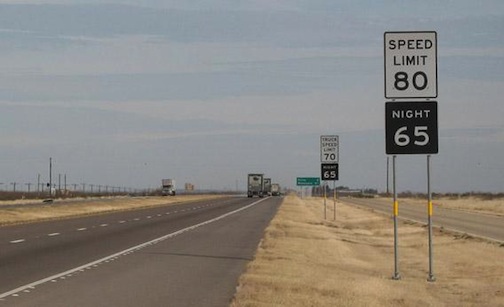Speed Limit: 80. Who’s Ready?
Posted on Aug 22, 2020 in Safety | Comments Off on Speed Limit: 80. Who’s Ready?

We all do it anyway. With many Interstate speed limits at 70 miles per hour, it’s easy to push that to 75 or even 80 when cruising the vast spaces between cities.
On a recent trip from Washington to Oregon, I had my cruise set at 75 and still got passed by cars that had to be going 85. Upon entering Oregon I experienced the pain of a sudden decrease to 65 and wondered why the law there required me to go so painfully slow.
Modern cars are capable of easily cruising at 80 or more, especially with the advent of 8- and 9-speed automatic transmissions that are built for efficiency at high speeds.
With the advancement of technology and the ability to go faster, the Interstate highway system needs to start keeping pace.
In some places, that is happening.
The highest speed limit in the country is in Texas, on a 41-mile stretch of toll road between Austin and San Antonio where motorists can legally travel at up to 85 mph. That means it takes about half an hour to make the trip, a savings of a few minutes compared with a 75-mph limit.
Now, sections of road in Idaho and Wyoming are poised to have the limit increased to 80 miles per hour as soon as this summer.
The Idaho state legislature pushed the change through and is now studying safety surveys to determine where to implement the increases.
The same situation has unfolded in Wyoming. In my opinion, that’s one state that should consider eliminating the speed limit altogether. Long flat stretches of asphalt and almost zero traffic contribute to the perfect scenario for speed. Aside from the occasional jackalope getting blindsided by lightning-quick sheet metal, the risks of increased speed seem pretty minor.
In most states, though, our highways are in no condition to handle 60-mph limits, much less 80 or more. Potholes, ruts, cracks and deteriorating asphalt make driving a slow and painful commute.




